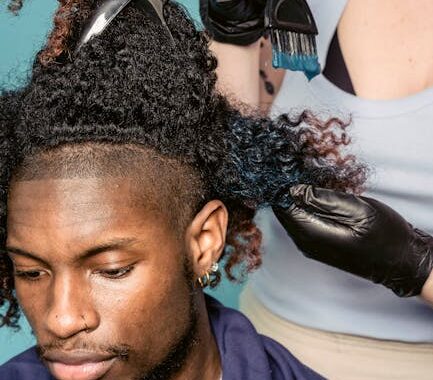Samurai Hairstyles 2017: A Retrospective on Trends and Influences
The year 2017 witnessed a resurgence of interest in samurai hairstyles, a reflection of broader cultural trends embracing historical aesthetics and unique self-expression. This article delves into the specific styles prevalent in 2017, exploring their variations, influences, and the lasting impact they had on contemporary men’s fashion and grooming. Understanding the context surrounding these samurai hairstyles reveals not just aesthetic choices but also a deeper engagement with Japanese culture and its enduring appeal.
The Rise of the Samurai Aesthetic in 2017
Several factors contributed to the popularity of samurai hairstyles in 2017. The growing influence of Japanese pop culture, including anime, manga, and video games, played a significant role. These mediums often feature characters with distinctive, elaborate hairstyles, inspiring many to emulate these looks. Furthermore, the rise of social media platforms like Instagram and Pinterest allowed for easy dissemination of style inspiration, facilitating the widespread adoption of trends like samurai-inspired haircuts. This visual exchange transcended geographical boundaries, making these styles accessible globally. The samurai aesthetic, historically associated with strength, honor, and discipline, also resonated with a generation seeking bold and expressive self-image.
Key Samurai Hairstyle Variations of 2017
While the term “samurai hairstyle” encompasses a wide range of styles, 2017 saw a few distinct variations gaining traction. These were not direct historical replicas but rather interpretations and modernizations of the classic samurai look. Many incorporated elements of traditional styles, adapting them for contemporary taste.
The Top Knot (Top Bun)
Perhaps the most recognizable samurai-inspired style, the top knot or top bun, saw widespread adoption in 2017. Unlike the strictly functional topknots of historical samurai, the 2017 versions were often more stylized and less tightly bound. Variations included high and low buns, with some incorporating braids or intricate detailing. Hair length and texture played a crucial role in determining the overall look and suitability of the style. [See also: Modern Takes on the Classic Top Knot]
Long Hair with Side Part
Another popular variation involved longer hair styled with a sharp side part. This style, while simpler than the top knot, still evoked the spirit of the samurai aesthetic through its length and deliberate styling. Many individuals opted for this style as a less demanding yet still impactful way to incorporate samurai-inspired elements into their appearance. The length allowed for versatility in styling, with options ranging from sleek and straight to textured and wavy.
Undercut with Top Length
The undercut, a style that features short sides and long hair on top, lent itself well to a samurai-inspired look. The contrast between the short and long hair created a striking visual effect, echoing the boldness and assertiveness often associated with samurai warriors. The long top hair could be styled into a top knot, swept to the side, or left loose, offering considerable flexibility.
Influences and Inspirations
The samurai hairstyles of 2017 were clearly influenced by a confluence of factors beyond just historical imagery. Japanese popular culture played a substantial role, but the overall trends in men’s fashion also played a part. The growing acceptance of longer hair in men’s fashion created a fertile ground for styles that embraced length and texture, directly contributing to the popularity of these samurai-inspired looks. The focus on individuality and self-expression also enabled the personalization of these styles, leading to unique variations across individuals.
Maintaining and Styling Samurai Hairstyles
Achieving and maintaining these styles requires specific products and techniques. High-quality hair products such as pomades, waxes, and hairsprays were essential for shaping and holding the hair in place. The use of hair ties and accessories was also common, particularly for top knots and buns. Professional hairstylists specializing in men’s grooming could offer advice on achieving and maintaining these styles, especially considering the nuances of hair texture and length. [See also: Essential Products for Samurai Hairstyles]
The Enduring Legacy of Samurai Hairstyles
While the peak popularity of samurai hairstyles in 2017 might have subsided, their influence remains palpable. The styles continue to appear, albeit perhaps in more subtle or modified forms, within contemporary men’s hairstyles. The underlying aesthetic—a blend of strength, individuality, and cultural resonance—continues to inspire innovative interpretations. The willingness to embrace bold styles and experiment with self-expression, which characterized the 2017 trend, signifies a broader shift in men’s fashion and grooming.
Beyond the Look: Cultural Appreciation
The adoption of samurai hairstyles in 2017, and beyond, is not merely about aesthetics; it represents a cultural exchange. The styles serve as a visual bridge, connecting individuals with a rich history and tradition. While respecting the cultural origins, it’s crucial to approach these styles with sensitivity and understanding. It’s an appreciation for history and a celebration of self-expression that merge together beautifully through the adoption of such unique hairstyles. The samurai hairstyle, therefore, stands as a testament to the enduring power of cultural influence and personal expression.
In conclusion, the samurai hairstyles of 2017 reflected a larger cultural shift, fueled by pop culture influence and a desire for unique self-expression. The various styles, from the top knot to the undercut, showcased the adaptability and enduring appeal of this aesthetic. The legacy of these styles continues to resonate, demonstrating the lasting impact of cultural trends and the ongoing evolution of men’s fashion.


